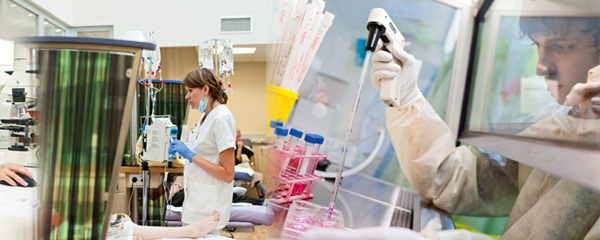A haemopathy is a blood disease liable to affect the red blood cells, the white blood cells and/or the platelets. There are benign haemopathies, such as anaemia and certain haemoglobinopathies, and malignant haemopathies. These include leukaemia or “blood cancers”, lymphomas which are cancers of the lymph glands or the spleen, and myelodysplasic and myeloproliferative syndromes in which the former means there is a malfunctioning of blood cell production while the latter means excessive blood cell production. In 2012, there were 35,000 new cases of malignant haeomopathies in France. More than 2/3 of cases were lymphoid haemopathies.

